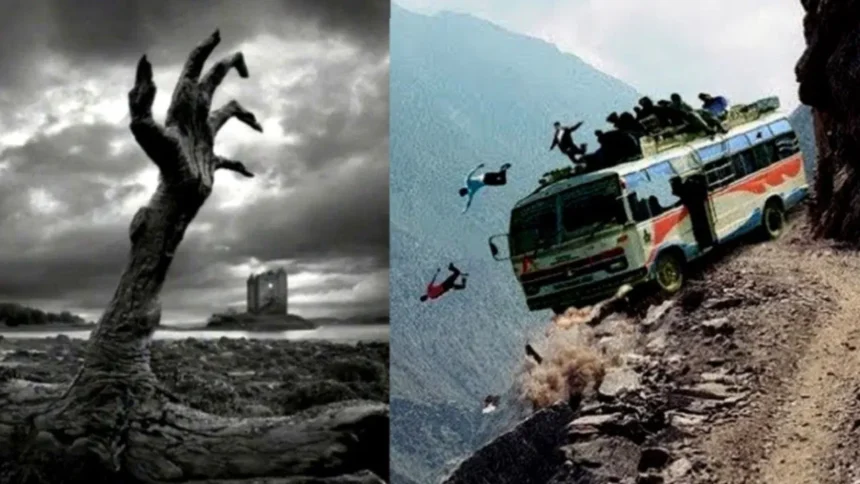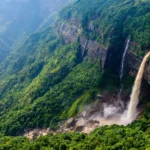Top 5 Most Dangerous Places in India: A Closer Look
India, with its diverse landscapes and vibrant cultures, is a country of contrasts. While many parts are renowned for their beauty and heritage, some areas are considered dangerous due to various factors. This blog delves into the top 5 most dangerous places in India, examining why they pose risks and what travelers should know.
1. Kashmir Valley
Overview
The Kashmir Valley, known for its stunning natural beauty, has been a conflict hotspot for decades. Political instability, insurgency, and cross-border tensions with Pakistan contribute to its dangerous reputation.
Reasons for Danger
- Political Instability: Long-standing territorial disputes and internal conflicts.
- Insurgency: Ongoing clashes between militants and security forces.
- Travel Restrictions: Frequent curfews and restricted zones due to security reasons.
Safety Tips
- Avoid Non-Essential Travel: Only visit if absolutely necessary and ensure you stay updated with local news.
- Travel with Security: Engage with reliable tour operators who provide security details.
2. Maoist-Affected Areas
Overview
Several regions in India, especially in states like Chhattisgarh, Jharkhand, Odisha, and West Bengal, are affected by Maoist insurgency. These areas are known for violence and frequent clashes between Maoist rebels and government forces.
Reasons for Danger
- Rebel Activities: Maoist groups engage in violent attacks on government infrastructure and personnel.
- Civil Unrest: Frequent disruptions and violent confrontations in affected regions.
- Isolation: Difficulty in accessing medical and emergency services due to remote locations.
Safety Tips
- Avoid Conflict Zones: Stay away from areas identified as high-risk by local authorities.
- Travel in Groups: If travel is necessary, do so in groups with local guidance.
3. Andaman and Nicobar Islands (Certain Areas)
Overview
While the Andaman and Nicobar Islands are known for their beautiful beaches and rich marine life, some parts are isolated and dangerous due to the presence of hostile indigenous tribes and challenging environmental conditions.
Reasons for Danger
- Hostile Tribes: The Sentinelese, for example, are known to be hostile towards outsiders.
- Dangerous Terrain: Dense forests and unpredictable weather conditions.
- Limited Medical Facilities: Difficult access to medical assistance in remote areas.
Safety Tips
- Respect Indigenous Territories: Do not attempt to visit areas inhabited by hostile tribes.
- Prepare Adequately: Ensure you are well-prepared for the environment and carry necessary supplies.
4. North-East India (Certain Areas)
Overview
The North-East region of India, including states like Assam, Manipur, and Nagaland, faces various security issues due to ethnic conflicts, insurgency, and militant activities.
Reasons for Danger
- Ethnic Conflicts: Frequent clashes between different ethnic groups.
- Insurgency: Various militant groups operating in the region.
- Travel Restrictions: Some areas are under armed forces’ control with restricted access.
Safety Tips
- Stay Informed: Regularly check travel advisories and local news.
- Follow Local Guidance: Travel with local guides who are familiar with the security situation.
5. Bhilwara, Rajasthan
Overview
Bhilwara in Rajasthan has gained notoriety for being one of the most dangerous places in terms of road safety due to its high accident rates and poor road conditions.
Reasons for Danger
- Poor Road Conditions: Many roads are poorly maintained, leading to frequent accidents.
- High Accident Rates: The area has a high incidence of road traffic accidents.
- Limited Emergency Services: Inadequate medical and rescue services for accident victims.
Safety Tips
- Exercise Caution: Drive carefully and adhere to traffic regulations.
- Emergency Preparedness: Be aware of the nearest medical facilities and emergency services.
Summary Table
| Location | Primary Risks | Safety Tips |
|---|---|---|
| Kashmir Valley | Political instability, insurgency | Avoid non-essential travel, travel with security |
| Maoist-Affected Areas | Rebel activities, civil unrest | Avoid conflict zones, travel in groups with local guidance |
| Andaman and Nicobar Islands | Hostile tribes, dangerous terrain | Respect indigenous territories, prepare adequately |
| North-East India (Certain Areas) | Ethnic conflicts, insurgency | Stay informed, follow local guidance |
| Bhilwara, Rajasthan | Poor road conditions, high accident rates | Exercise caution, be prepared for emergencies |
Conclusion
Traveling to India offers a wealth of experiences, but it’s essential to be aware of the risks associated with certain areas. By understanding the dangers and following the safety tips provided, you can better navigate these regions and ensure a safer journey. Always stay informed and prioritize your safety while exploring this diverse and captivating country.







